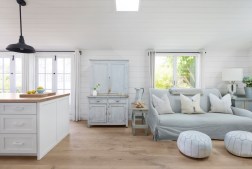How to Maximize Greenery in a Small Patio Garden Design
Designing a small patio garden can be a challenging task, especially when it comes to incorporating greenery. However, with the right planning and creativity, you can maximize the use of plants and create a lush oasis in even the tiniest of spaces. In this article, we will explore some tips and ideas to help you make the most of your small patio garden design by incorporating various types of greenery.
Choosing the Right Plants for Your Small Patio Garden
When it comes to designing a small patio garden, choosing the right plants is crucial. Opt for plants that are compact in size but offer visual interest. Consider using vertical gardening techniques such as hanging baskets or trellises to maximize space utilization. Some great options for small patio gardens include herbs like basil and mint, ornamental grasses like Japanese forest grass or fountain grass, and dwarf shrubs like boxwood or hydrangea.

Additionally, consider incorporating low-maintenance plants that require minimal care and attention. This way, you can enjoy your green oasis without having to spend too much time on maintenance tasks. Succulents like jade plants or echeverias are excellent choices as they are not only easy to care for but also add an interesting texture to your small patio garden.
Utilizing Vertical Space with Climbing Plants
One effective way to maximize greenery in a small patio garden is by utilizing vertical space with climbing plants. These plants not only add height and depth to your design but also create a sense of privacy and enclosure. Choose fast-growing climbers like ivy or jasmine that can quickly cover walls or fences.
To further enhance vertical gardening in your small patio garden, consider adding trellises or pergolas. These structures provide support for climbing plants while adding architectural interest to your outdoor space. You can also train vines along wires or ropes attached vertically to create a living wall effect.
Creating the Illusion of Space with Container Gardening
Container gardening is an effective technique for designing small patio gardens. It allows you to bring greenery to your space while giving you the flexibility to move plants around as needed. When selecting containers, opt for ones that are lightweight and can be easily moved. Hanging baskets, window boxes, and vertical planters are great options for maximizing space utilization in a small patio garden.
To create the illusion of space in your small patio garden, consider using containers of varying heights and sizes. Place taller plants towards the back or corners of your patio while placing shorter ones towards the front or edges. This layering effect will give your garden depth and make it appear larger than it actually is.
Enhancing Your Small Patio Garden Design with Accessories
In addition to plants, incorporating accessories can further enhance your small patio garden design. Choose items that complement the greenery and add visual interest to your outdoor space. Some ideas include decorative pots or planters in different shapes and colors, outdoor rugs or mats to define seating areas, and fairy lights or lanterns for ambient lighting during evenings.
Furthermore, consider adding seating options such as benches or compact chairs that blend seamlessly with your overall design. These additions not only provide functionality but also create a cozy atmosphere where you can relax and enjoy your small patio garden.
In conclusion, designing a small patio garden doesn’t mean compromising on greenery. By choosing the right plants, utilizing vertical space with climbing plants, employing container gardening techniques, and enhancing your design with accessories, you can maximize the use of greenery in even the tiniest of spaces. With some creativity and thoughtful planning, you can transform your small patio into a lush oasis that brings joy all year round.
This text was generated using a large language model, and select text has been reviewed and moderated for purposes such as readability.


